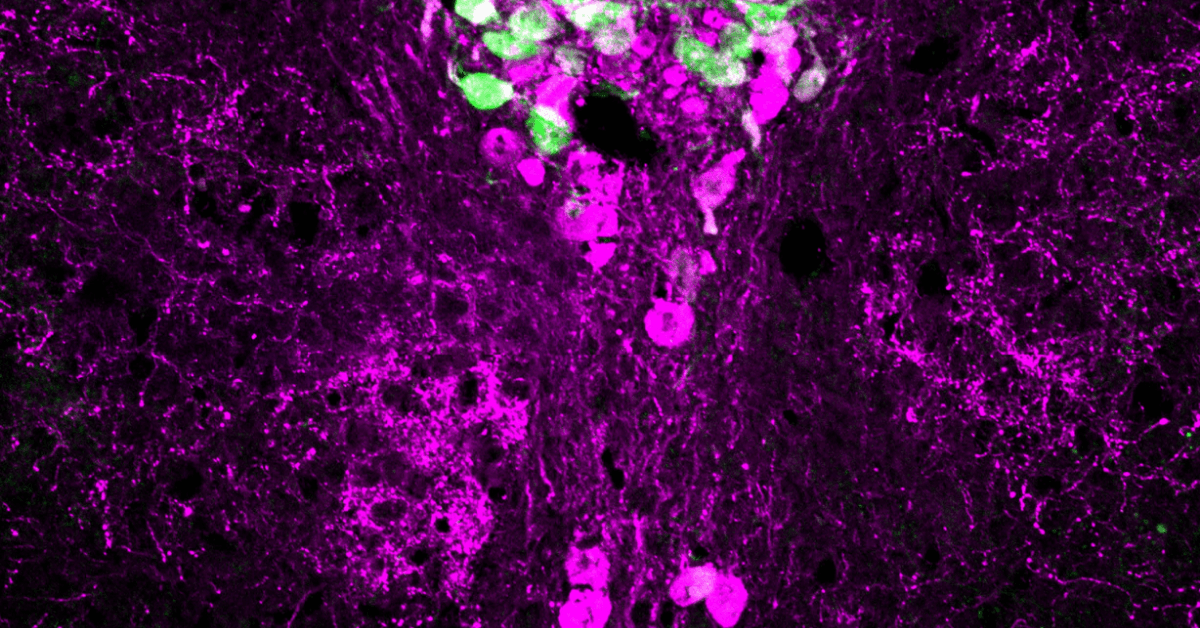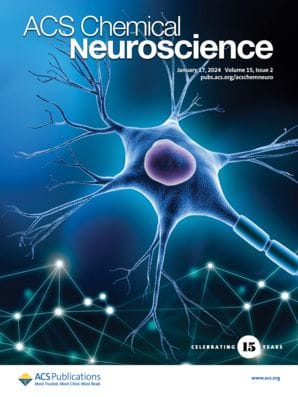This Special Issue, dedicated to the 2025 Meeting of the International Society for Serotonin Research, will showcase new and exciting developments in the world of serotonin research. Submit your manuscript by May 31, 2026.

The Meeting of the International Society for Serotonin Research (ISSR) has been a historic and premier forum to highlight the cutting edge in serotonin research. Keeping in this tradition, the 2025 meeting of the ISSR, held in Vienna, Austria, showcased an exciting program of serotonin research.
These presentations advanced our understanding of the roles of serotonin in health and disease, in relation to behavior and exciting new serotonin-based treatments for disease. This Special Issue in ACS Chemical Neuroscience will be a collection of this work, bringing together important perspectives, critical reviews and original research.
To gain deeper insights into the evolving discourse surrounding this topic, we invite you to explore a selection of recent serotonin research published in ACS Chemical Neuroscience below.
Topics include, but are not limited to:
- Tool development for monitoring serotonin in different biological systems
- Serotonin receptors and autoreceptors
- Serotonin pharmacology, understanding the mechanism of action of existing drugs and development of new ones
- How serotonin underlies behavior
- Serotonin circuits
- Disease studies
- Computational models
Organizing Editors
Dr. Parastoo Hashemi, Associate Editor, ACS Chemical Neuroscience
Imperial College London, United Kingdom
Prof. Lynette Daws, Guest Editor, ACS Chemical Neuroscience
Frost Bank Distinguished Professor in Biomedical Research, University of Texas Health Science Center at San Antonio, United States
Submission Information
We welcome submissions for this Special Issue through May 31, 2026. For more information on submission requirements, please visit the journal’s Author Guidelines page.
Accepted manuscripts for consideration in this Special Issue will include research articles, letters, reviews, perspectives, and viewpoints. Papers accepted for publication for this Special Issue will be available ASAP (as soon as publishable) online as soon as they are accepted. After all submissions have been published, they will then be compiled online on a dedicated landing page to form the Special Issue. Manuscripts submitted for consideration will undergo the full rigorous peer review process expected from ACS journals.
Open Access: There are diverse open-access options for publications in American Chemical Society journals. Please visit our Open Science Resource Center for more information.
How to Submit
- Log in to the ACS Publishing Center
- Choose ACS Chemical Neurocience.
- Select your manuscript type, and, under "Special Issue Selection," choose “Serotonin 2026”.
If you have any general questions regarding submission to this Special Issue, please contact eic@chemneuro.acs.org.
Explore Recent Serotonin Research from ACS Chemical Neuroscience
Acute Optogenetic Stimulation of Serotonin Neurons Reduces Cell Proliferation in the Dentate Gyrus of Mice
Naozumi Araragi, Markus Petermann, Mototaka Suzuki, Matthew Larkum, Valentina Mosienko, Michael Bader, Natalia Alenina, and Friederike Klempin*
DOI: 10.1021/acschemneuro.4c00771
Not Just a Mood Disorder─Is Depression a Neurodevelopmental, Cognitive Disorder? Focus on Prefronto-Thalamic Circuits
Nina Nitzan Soto, Patricia Gaspar, and Alberto Bacci*
DOI: 10.1021/acschemneuro.3c00828
Serotonin Receptors in Myocardial Infarction: Friend or Foe?
F.S. Bahr, M. Ricke-Hoch, E. Ponimaskin, and F.E. Müller*
DOI: 10.1021/acschemneuro.4c00031
Prenatal Fluoxetine Exposure Influences Glucocorticoid Receptor-Mediated Activity in the Prefrontal Cortex of Adolescent Rats Exposed to Acute Stress
Maria Teresa Gallo, Beatrice Dolci, Fabio Fumagalli, Paola Brivio*, and Francesca Calabrese
DOI: 10.1021/acschemneuro.3c00856
Serotonin Signaling through Lipid Membranes
Liubov S. Kalinichenko, Johannes Kornhuber, Steffen Sinning, Jana Haase, and Christian P. Müller*
DOI: 10.1021/acschemneuro.3c00823
Research Report: A Link between Sertraline Treatment and Susceptibility to (Mis)information
Michal Piksa, Karolina Noworyta, Jan Piasecki, Aleksander Gundersen, Jonas Kunst, Mikolaj Morzy, and Rafal Rygula*
DOI: 10.1021/acschemneuro.3c00825
Reversible Morphological Remodeling of Prefrontal and Hippocampal Serotonergic Fibers by Fluoxetine
Serena Nazzi, Marta Picchi, Sara Migliarini, Giacomo Maddaloni, Noemi Barsotti, and Massimo Pasqualetti*
DOI: 10.1021/acschemneuro.3c00837
Sex-Specific Transcriptomic Changes in the Villous Tissue of Placentas of Pregnant Women Using a Selective Serotonin Reuptake Inhibitor
Laura Staal, Torsten Plösch, Theodora Kunovac Kallak, Inger Sundström Poromaa, Bregje Wertheim, and Jocelien D. A. Olivier*
DOI: 10.1021/acschemneuro.3c00621
A Bright Future? A Perspective on Class C GPCR Based Genetically Encoded Biosensors
Margulan Otanuly, Martin Kubitschke, and Olivia Andrea Masseck*
DOI: 10.1021/acschemneuro.3c00854
Evidence for a Role of 5-HT-glutamate Co-releasing Neurons in Acute Stress Mechanisms
L. Sophie Gullino, Cara Fuller, Poppy Dunn, Helen M. Collins, Salah El Mestikawy, and Trevor Sharp*
DOI: 10.1021/acschemneuro.3c00758
Behavioral and Neurophysiological Implications of Pathological Human Tau Expression in Serotonin Neurons
Nazmus S. Khan, Juan Uribe Isaza, Nahid Rouhi, Naila F. Jamani, Shaista Jabeen, Amisha K. Gill, Mio Tsutsui, Frank Visser, and Derya Sargin*
DOI: 10.1021/acschemneuro.3c00626
In Vivo Two-Photon Microscopy Reveals Sensory-Evoked Serotonin (5-HT) Release in Adult Mammalian Neocortex
Gabriel Ocana-Santero, Adam M. Packer, Trevor Sharp*, and Simon J. B. Butt*
DOI: 10.1021/acschemneuro.3c00725
Wiring and Volume Transmission: An Overview of the Dual Modality for Serotonin Neurotransmission
Giulia Gianni and Massimo Pasqualetti*
DOI: 10.1021/acschemneuro.3c00648
